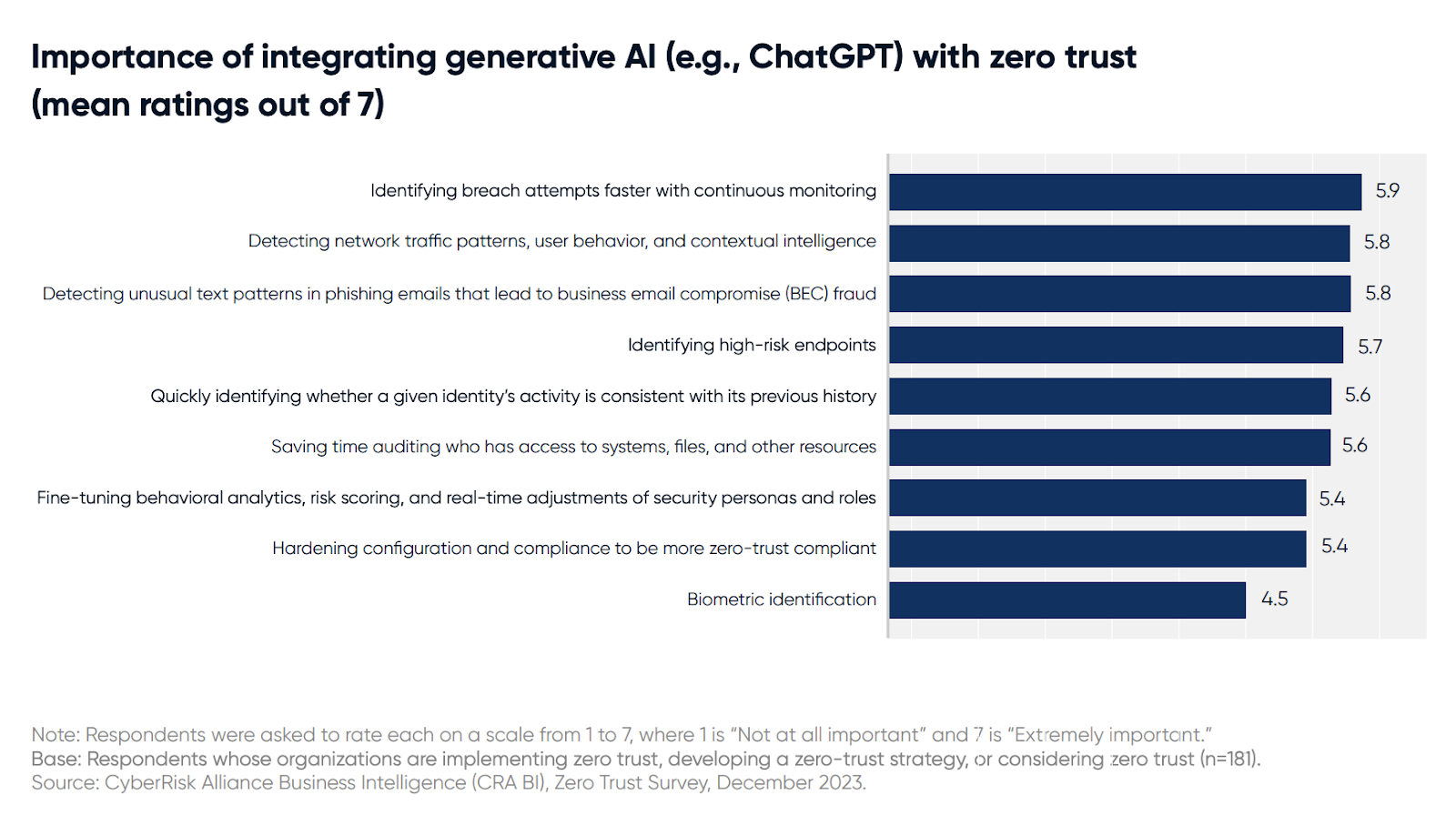Zero trust
Can AI rescue zero trust?

Will zero trust ever take flight? Years after the concept brought “trust no one, verify everything” into the mainstream, the vast majority of organizations still struggle to enforce it on their own turf.A recent survey of IT security professionals by CyberRisk Alliance found that while 57% of organizations are receptive to bringing zero trust online, only 30% have partially or fully implemented it. Those numbers aren’t exactly the picture of progress. The obstacles that respondents cited — high costs, administrative complexities, lack of guidance — make it clear why zero-trust initiatives so often sputter rather than soar. Applications of AI in zero trust could mark a turning point, though. Here’s how.  In the CyberRisk Alliance survey on zero trust, respondents said they need more help going forward, and they see an opportunity for AI to step in where other tools have failed. Specifically, they’re most excited to see AI assist zero-trust efforts by identifying breach attempts faster, revealing patterns in user behavior and network activity, and foiling convincing phishing attempts. The takeaway is that AI combines incredible speed, precision, and depth of data to give organizations a contextually-rich understanding of the threats that zero trust practices aim to root out. In the next few years, we may see a marriage of generative AI tools with zero trust playbooks that, for the first time ever, bring this long-sought security philosophy within reach.
In the CyberRisk Alliance survey on zero trust, respondents said they need more help going forward, and they see an opportunity for AI to step in where other tools have failed. Specifically, they’re most excited to see AI assist zero-trust efforts by identifying breach attempts faster, revealing patterns in user behavior and network activity, and foiling convincing phishing attempts. The takeaway is that AI combines incredible speed, precision, and depth of data to give organizations a contextually-rich understanding of the threats that zero trust practices aim to root out. In the next few years, we may see a marriage of generative AI tools with zero trust playbooks that, for the first time ever, bring this long-sought security philosophy within reach.
Related Events
Get daily email updates
SC Media's daily must-read of the most current and pressing daily news
You can skip this ad in 5 seconds



